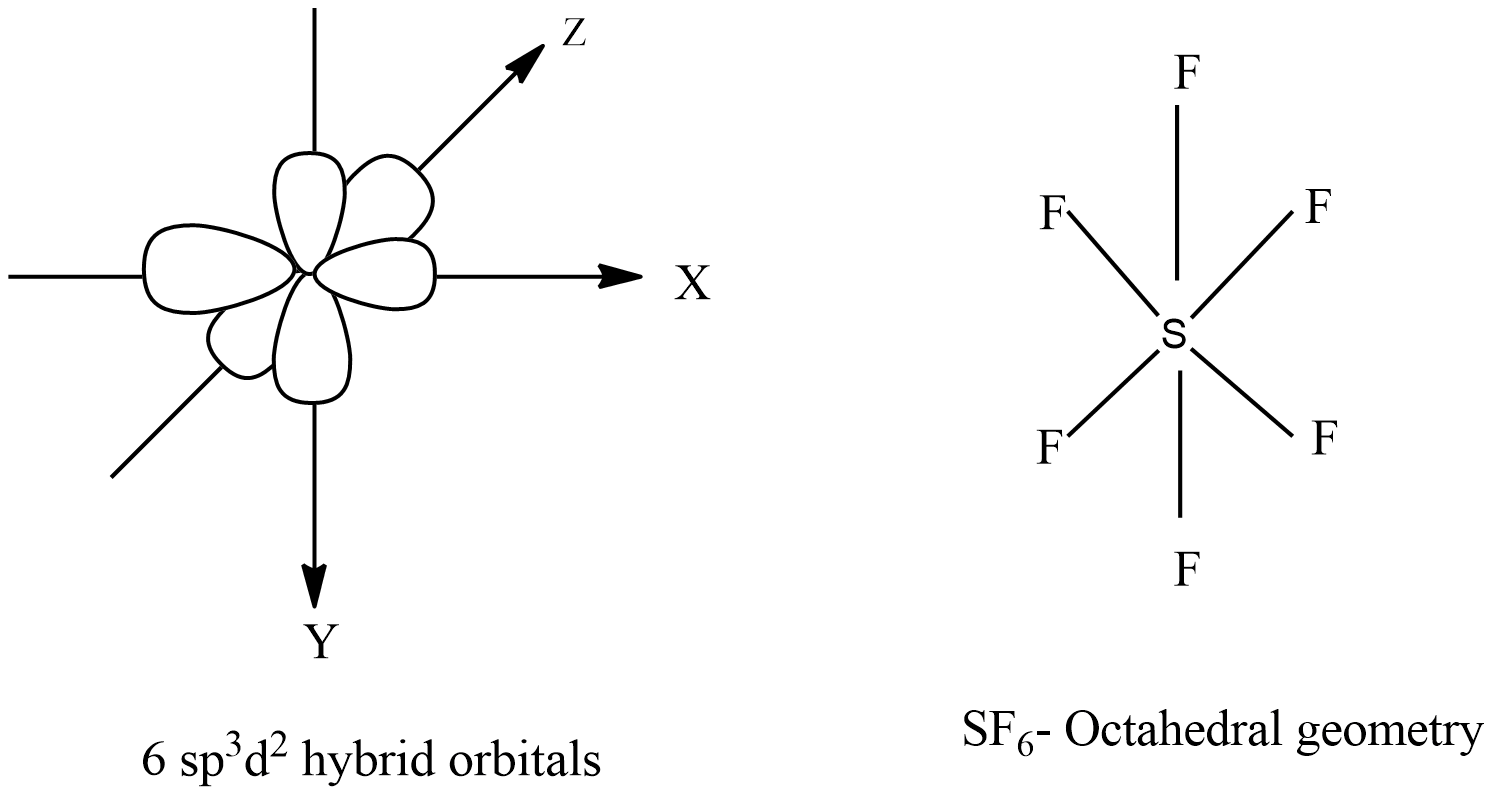
Electron
Answer
483.6k+ views
2 likes
Hint: The concept of intermixing of different orbitals of atoms and then redistribution of energy to give equivalent energy of new orbitals, identical shape, and symmetrical orientation in space is hybridization. As a result of hybridization, new orbitals are formed known as hybrid orbitals, and bonds formed by hybrid orbitals are called hybrid bonds.
Complete step by step solution:
-
-Properties: six equivalent
-Out of six hybrid orbitals, four are lying in one plane while the remaining two are directed above and below the plane containing four hybrid orbitals.
-Geometry is octahedral and bond angle is
-The outer shell electrons in sulfur excited from the ground state to a higher energy state, then the electronic configuration will be:

Note: The characteristics of hybridization are the number of hybrid orbitals formed are equal to the number atomic orbitals which orbitals undergo hybridization and these hybrid orbitals are equivalent in energy with shape. The stability of hybrid orbitals more than atomic orbitals and these hybrid orbitals have different orientations in space.
Complete step by step solution:
-
-Properties: six equivalent
-Out of six hybrid orbitals, four are lying in one plane while the remaining two are directed above and below the plane containing four hybrid orbitals.
-Geometry is octahedral and bond angle is
-The outer shell electrons in sulfur excited from the ground state to a higher energy state, then the electronic configuration will be:

Note: The characteristics of hybridization are the number of hybrid orbitals formed are equal to the number atomic orbitals which orbitals undergo hybridization and these hybrid orbitals are equivalent in energy with shape. The stability of hybrid orbitals more than atomic orbitals and these hybrid orbitals have different orientations in space.
Recently Updated Pages
Express the following as a fraction and simplify a class 7 maths CBSE

The length and width of a rectangle are in ratio of class 7 maths CBSE

The ratio of the income to the expenditure of a family class 7 maths CBSE

How do you write 025 million in scientific notatio class 7 maths CBSE

How do you convert 295 meters per second to kilometers class 7 maths CBSE

Write the following in Roman numerals 25819 class 7 maths CBSE

Trending doubts
State and prove Bernoullis theorem class 11 physics CBSE

What are Quantum numbers Explain the quantum number class 11 chemistry CBSE

Write the differences between monocot plants and dicot class 11 biology CBSE

1 ton equals to A 100 kg B 1000 kg C 10 kg D 10000 class 11 physics CBSE

State the laws of reflection of light

One Metric ton is equal to kg A 10000 B 1000 C 100 class 11 physics CBSE




